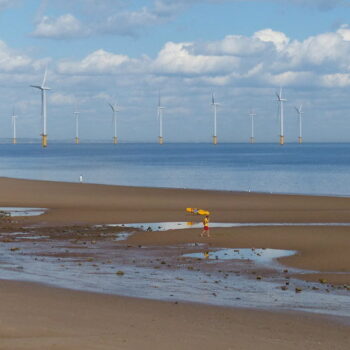The new long-term climate strategy for the EU can lay the foundations for a prosperous climate neutral society if it addresses Just Transition.
In November 2018, the European Commission presented its strategic 2050 vision for a climate neutral EU. The Commission’s proposal is the first step towards developing a formal long-term strategy by 2020 to fulfil the EU’s commitment under the Paris Agreement. It has been discussed at various Council configurations and is expected to be on the agenda of the Sibiu summit in May 2019. The European Parliament is preparing to present its own views in March 2019.
For the EU but also for national governments, the new long-term strategy serves as a useful instrument for laying the grounds for the economic and societal transformation required to decarbonise the European economy. However, the success of this endeavour depends critically on whether it manages socio-economic consequences in a just way. Only by addressing Just Transition can the long-term strategy become a tool for a prosperous climate neutral EU.
After analysing transition challenges and opportunities in some of Europe’s key sectors, we have identified five elements for a successful Just Transition that are common across sectors and complement the EU’s 2050 vision:
- A clear sense of medium and long-term direction to give planning certainty: The EU and Member States need to establish a goal of climate neutrality by 2050 following the presentation of the Commission’s proposal. Additionally, intermediate climate milestones for 2030 need to be adjusted to be in line with a climate neutral scenario.
- Mapping transition trajectories for sectors and regions: The next European Commission needs to develop sectoral pathways to climate neutrality. For example, Member States should call on the next European Commission to make developing a strategy for industry decarbonisation a priority. These pathways are essential for regions to engage in their own transition planning.
- Include all dimensions of Just Transition: Fair balancing of all interests across society requires a comprehensive Just Transition framework. This framework should incorporate negative and positive impacts associated with accelerated climate action, such as job losses and opportunities, as well as the impacts from delaying climate action.
- The EU enables regions and sectors to design and implement a transition: By providing relevant data, analytical tools and financial support the EU can support Member States and local stakeholders in their efforts for designing a Just Transition. For example, a renewed skills audit under the EU Skills Panorama (an initiative of the European Commission identifying skill needs across the EU) with regional data on the skills needs for a climate neutral Europe helps regions, sectors and people in re-skilling for future-proof jobs.
- Identify key actors in the Just Transition: Designing good Just Transition policies goes beyond the remit of energy or climate departments. For instance, aligning skills development or providing tax incentives might require the involvement of education ministries or the Treasury.


